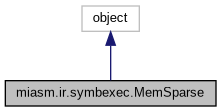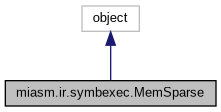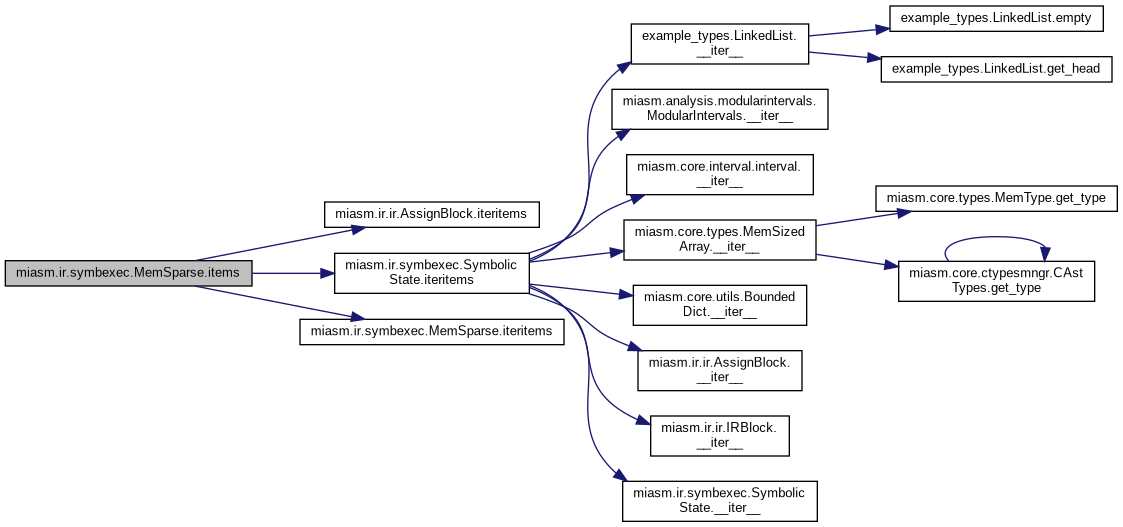 |
miasm
Reverse engineering framework
|
 |
miasm
Reverse engineering framework
|


Public Member Functions | |
| def | __init__ (self, addrsize, expr_simp=expr_simp_explicit) |
| def | __contains__ (self, expr) |
| def | contains_partial (self, expr) |
| def | clear (self) |
| def | copy (self) |
| def | __delitem__ (self, expr) |
| def | delete_partial (self, expr) |
| def | read (self, ptr, size) |
| def | write (self, ptr, expr) |
| def | iteritems (self) |
| def | items (self) |
| def | dump (self) |
| def | __repr__ (self) |
Public Attributes | |
| addrsize | |
| expr_simp | |
| base_to_memarray | |
Link a symbolic memory pointer to its MemArray. For each symbolic memory object, this object will extract the memory pointer *ptr*. It then splits *ptr* into a symbolic and an integer part. For example, the memory @[ESP+4] will give ESP+4 for *ptr*. *ptr* is then split into its base ESP and its offset 4. Each symbolic base address uses a different MemArray. Example: - @32[EAX+EBX] - @8[EAX+EBX+0x100] Will be stored in the same MemArray with a EAX+EBX base
| def miasm.ir.symbexec.MemSparse.__init__ | ( | self, | |
| addrsize, | |||
expr_simp = expr_simp_explicit |
|||
| ) |
@addrsize: size (in bits) of the addresses manipulated by the MemSparse @expr_simp: an ExpressionSimplifier instance
| def miasm.ir.symbexec.MemSparse.__contains__ | ( | self, | |
| expr | |||
| ) |
Return True if the whole @expr is present For partial check, use 'contains_partial'

| def miasm.ir.symbexec.MemSparse.__delitem__ | ( | self, | |
| expr | |||
| ) |
Delete a value @expr *fully* present in memory For partial delete, use delete_partial

| def miasm.ir.symbexec.MemSparse.__repr__ | ( | self | ) |
| def miasm.ir.symbexec.MemSparse.clear | ( | self | ) |
Reset the current object content
| def miasm.ir.symbexec.MemSparse.contains_partial | ( | self, | |
| expr | |||
| ) |
Return True if a part of @expr is present in memory

| def miasm.ir.symbexec.MemSparse.copy | ( | self | ) |
Copy the current object instance
| def miasm.ir.symbexec.MemSparse.delete_partial | ( | self, | |
| expr | |||
| ) |
Delete @expr from memory. Skip parts of @expr which are not present in memory.

| def miasm.ir.symbexec.MemSparse.dump | ( | self | ) |
Display MemSparse content

| def miasm.ir.symbexec.MemSparse.items | ( | self | ) |
Return stored memory variables and their values.

| def miasm.ir.symbexec.MemSparse.iteritems | ( | self | ) |
Iterate on stored memory variables and their values.

| def miasm.ir.symbexec.MemSparse.read | ( | self, | |
| ptr, | |||
| size | |||
| ) |
Return the value associated with the Expr at address @ptr @ptr: Expr representing the memory address @size: memory size (in bits), byte aligned


| def miasm.ir.symbexec.MemSparse.write | ( | self, | |
| ptr, | |||
| expr | |||
| ) |
Update the corresponding Expr @expr at address @ptr @ptr: Expr representing the memory address @expr: Expr instance


| miasm.ir.symbexec.MemSparse.addrsize |
| miasm.ir.symbexec.MemSparse.base_to_memarray |
| miasm.ir.symbexec.MemSparse.expr_simp |